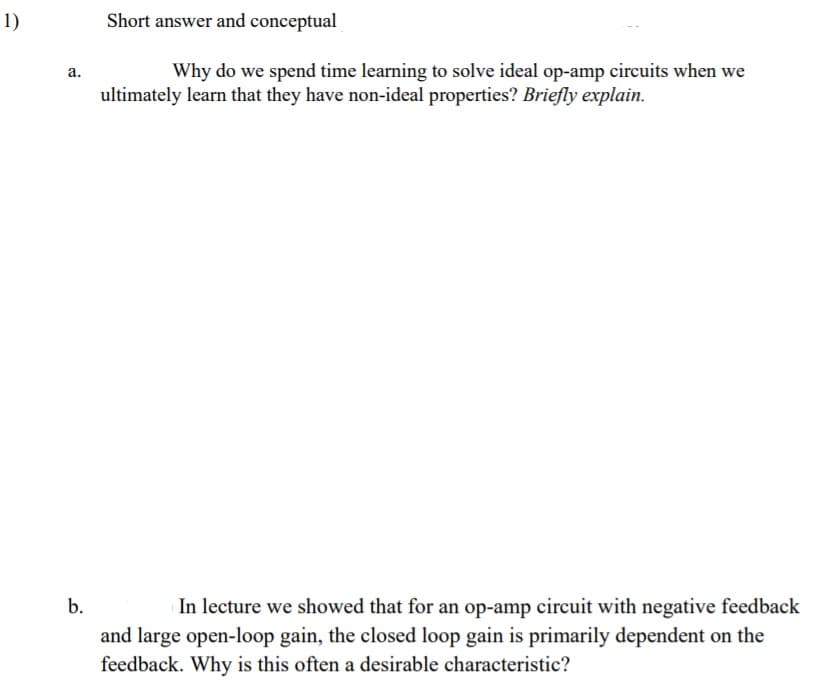1) Short answer and conceptual а. Why do we spend time learning to solve ideal op-amp circuits when we ultimately learn that they have non-ideal properties? Briefly explain. b. In lecture we showed that for an op-amp circuit with negative feedback and large open-loop gain, the closed loop gain is primarily dependent on the feedback. Why is this often a desirable characteristic?
Please show work

We know that the ideal OP-AMP is an amplifier with having infinite input impedance, also infinite open-loop gain, zero output impedance, infinite bandwidth, and zero noise. It has positive and negative inputs that allow the circuits that use feedback to have a wide range of functions. We know that the input resistance of an OP-AMP must be very high whereas the output resistance should be low. An op-amp should have a very high open-loop gain. In ideal, the input resistance and open-loop gain of an op-amp should be infinite while the output resistance would be zero. There is no current through the input resistance, there will be no voltage drop between the terminals of input. Hence there is no offset voltage appears across the inputs of an ideal operational amplifier. It has a small size, Reduced cost as compared to its discrete circuits. The same OP-AMP can be used for different applications. It is also having increased stability of the circuit, and the increased input impedance decreased output impedance and increased frequency bandwidth at the constant gain. An ideal op-amp is had perfect conditions to allow its function as an op-amp with 100% efficiency.
Step by step
Solved in 2 steps


